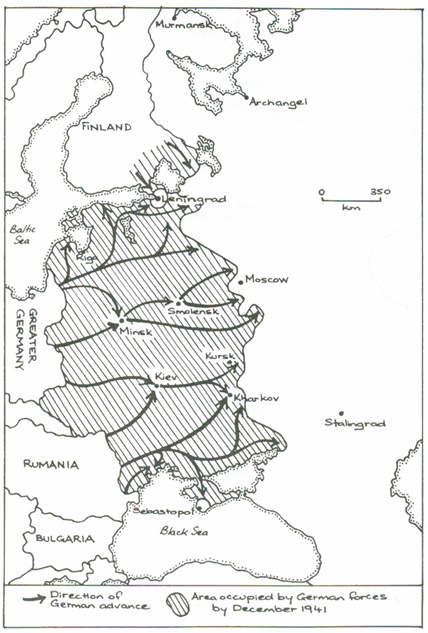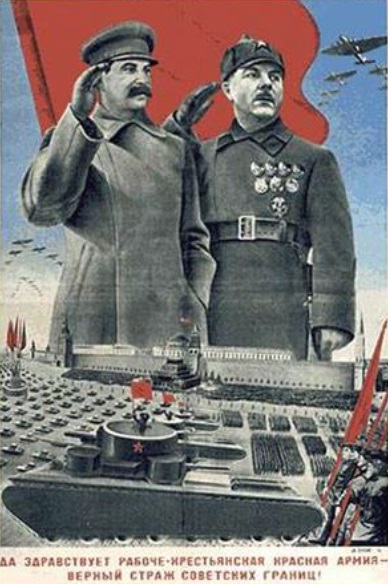|
|
NOTE: this topic is a stated topic on the AQA and Pearson iGCSE specifications only. It is NOT a topic on the Edexcel specification.
|
BackgroundIn the 1920s, the Soviet Union was an ostracised country:
In the 1930s, Soviet foreign policy continued to focus on protecting the revolution from foreign wars:
Notwithstanding, Hitler invaded the USSR on 22 June 1941. |
Going DeeperThe following links will help you widen your knowledge: World At War documentary on Stalingrad - a must-see To what extent did Stalin's achievements justify his methods? - essay by Prof Christopher Read
YouTube Impact of the War - DickinsonHistory Myths of WWII - Politsturm (politicall biased, but worth watching) |
|
Great Patriotic War: Events 22 June 1941 The Nazis launch Operation Barbarossa – the invasion of the USSR – taking Stalin by surprise. December 1941 The Nazis had conquered huge areas of Russia (see map), but had failed to take Leningrad and Moscow.. 1942-43 The Nazi Sixth Army was stopped at the battle Stalingrad and eliminated. July-August 1943 Nazis defeated at the Battle of Kursk – the largest tank battle in history. 1944 The Nazis were driven out of Russia. 2 May 1945 The Soviets captured Berlin.
|
Source A
Operation Barbarossa, 1941. The Nazis conquered 850,000 square miles of land.
|
Why did the Soviet Union Win the War ?
|
Source B
Soviet propaganda poster. It reads: “Long live Red Army of workers and peasants – the true guard of the Soviet borders!” Analyse the messages in this propaganda.
|
Results of the War
|
Consider:1. Pull up the Google image search on Soviet propaganda in WWII. Analyse the posters: how are they appealing to the Soviet public? 2. What do you reckon to Stalin as a war leader?
|
|
|
|
|
Spotted an error on this page? Broken link? Anything missing? Let me know. |
|

